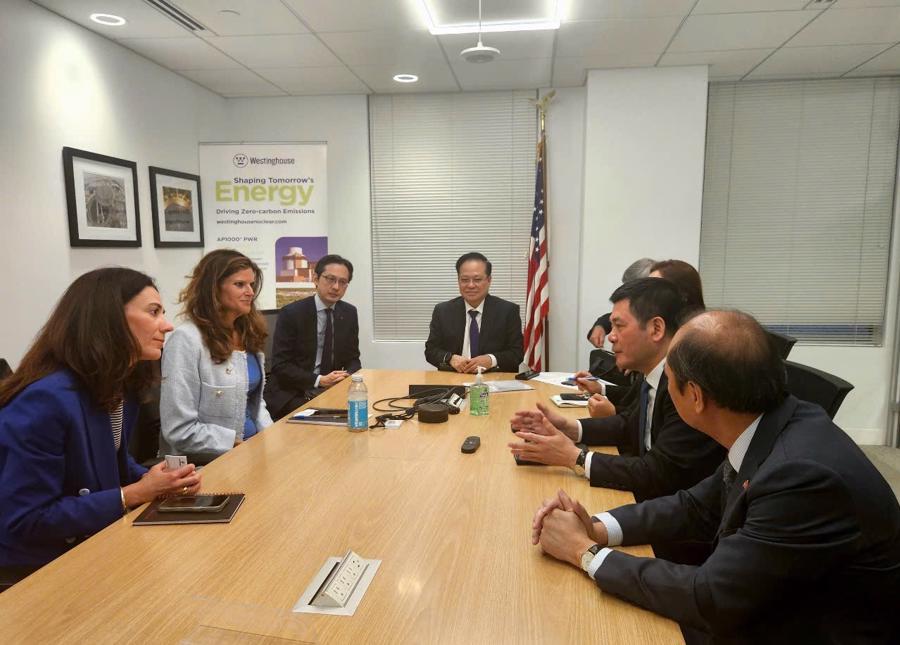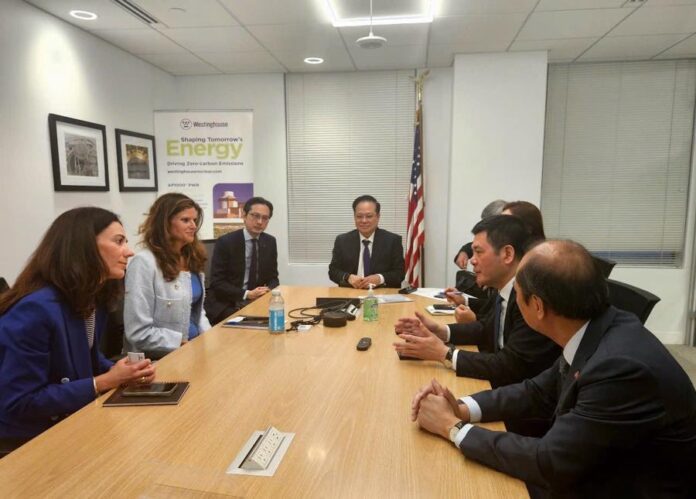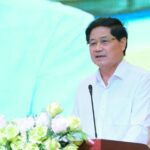## Vietnam-US Bilateral Trade Agreement Negotiations: A Step Towards Stronger Economic Ties
Both parties exhibited a willingness to advance the negotiation process.
The second round of negotiations for the Vietnam-US Bilateral Trade Agreement took place in Washington, D.C., from May 19 to 22, 2025, as per the agreed-upon schedule. Vietnam’s negotiation team was led by Minister of Industry and Trade Nguyen Hong Dien, with representatives from various ministries: Public Security, Foreign Affairs, Finance, Construction, Interior, Agriculture and Rural Development, Natural Resources and Environment, Science and Technology, Justice, and the State Bank.
BRIDGING THE TECHNICAL TRADE GAP
On the first day (May 19 local time, May 19-20 in Hanoi), the two sides exchanged overall approaches to resolving remaining issues and promoting substantive progress in the negotiations.
According to the Ministry of Industry and Trade, the exchange was conducted in an open, frank, and constructive spirit, focusing on key content groups. They reviewed and clarified the draft agreement’s wording and shared information on each country’s current policies, thereby creating a foundation for subsequent implementation steps.
This round of negotiations is expected to narrow the gap on some technical content, leading to the early finalization of the agreement. It will contribute to a more stable, sustainable, and balanced trade framework between the two nations.
EMBRACING LONG-TERM COLLABORATION IN RENEWABLE ENERGY
On May 19, on the sidelines of the negotiations, Minister Nguyen Hong Dien met with Westinghouse, a global leader in nuclear technology.
During the meeting, Minister Dien shared that Vietnam is gradually restarting its nuclear power development program to meet the growing electricity demand while addressing the challenges of low stability and weather dependency in renewable energy sources. He emphasized that Vietnam will approach nuclear power with caution, adopting modern and practical approaches to ensure safety, efficiency, and sustainable development.
Vietnam has included orientations related to nuclear power development in its Power Development Plan VIII. Accordingly, during the 2026–2030 period, Vietnam will establish the legal framework and prepare human resources for nuclear power development. The subsequent phase will involve the gradual implementation of nuclear power projects, initially on a small modular reactor (SMR) scale, aiming for commercial operation around 2035–2040.
Minister Dien affirmed that this foundation enables Vietnam to foster international cooperation in nuclear energy, including with Westinghouse. He also highlighted that energy development, particularly nuclear power, will serve as a new driver in balancing the trade between Vietnam and the United States.

In response, Margaret Cosentino, Vice President of Westinghouse, expressed strong support for Vietnam’s nuclear power development plans and appreciated the potential for long-term cooperation between the two sides. Westinghouse also affirmed its desire to accompany Vietnam in areas such as technology provision, technical transfer, and human resource development for the nuclear power industry.
During the meeting, the two sides agreed to promote the signing of a Memorandum of Understanding (MOU) between Westinghouse and the Vietnam Oil and Gas Group (Petrovietnam) in the field of nuclear power development. This is considered one of the first steps to materialize bilateral cooperation in energy, especially in large- and small-scale nuclear projects.
Additionally, Vietnam is expanding its cooperation orientations through public-private partnership (PPP) and build-operate-transfer (BOT) models in energy projects. The focus of collaboration with international partners, including the United States, will be technology transfer, high-quality human resource training, and adherence to global safety standards.
As per the plan approved by the Prime Minister, Vietnam will prepare the steps necessary to develop the first nuclear power complex in an area suitable for geology, climate, and infrastructure. Potential sites, such as Ninh Thuan, Quang Ngai, and Quang Binh, are being reassessed. The goal is to achieve a nuclear power contribution of approximately 6-7% to Vietnam’s total power mix by 2050, serving as a foundation for a stable and low-emission energy system.
Currently, ministries, departments, and specialized agencies are coordinating to review the legal framework, build state management capacity, and mobilize international resources to implement the nuclear power program in accordance with the set roadmap.
Vietnam’s proactive restart of its nuclear strategy amid expanding trade cooperation with the United States is a positive signal for both parties, opening up prospects for extensive collaboration in high-tech energy in the future.
The Power Sector Shines in Q1
The first quarter of 2025 witnessed a brilliant performance by the power sector. While hydroelectricity benefited from favorable hydrological conditions, thermal power also held its own for various reasons. The renewable energy group, bolstered by supportive policies, demonstrated exceptional growth as well.
The Sun-Powered Revolution: Unveiling the CoCo Solar Platform for Easy Access to Solar Power Installation and Financing.
On May 9, 2025, CoCo Solar, the pioneering platform for solar roof installation and financing, proudly debuted with a stellar lineup of strategic partners in attendance. The event marked a significant step forward in Vietnam’s renewable energy landscape, with the presence of leading financial and solar industry giants: VietinBank, BIDV, TPBank, MSB, VPBank, Sacombank, and renowned solar brands such as Sungrow, JA Solar, Trina Solar, Jinko Solar, Huawei, Deye, Solis, and Astronergy.
The Power of Persuasive Writing: Crafting Captivating Content for the Win
At the recent 2025 Annual General Meeting (for the 2024 financial year), held on the morning of April 29th, Gia Lai Electricity Joint Stock Company (HOSE: GEG) revealed ambitious growth plans. The company also announced its first-quarter financial statements for 2025, showcasing a significant improvement. This impressive performance is attributed to successful electricity price negotiations, with an astounding 89% of the annual profit plan achieved in just one quarter.








![[Photo Essay]: Experts, Managers, and Businesses Unite to Forge a Path Towards Sustainable Green Industry](https://xe.today/wp-content/uploads/2025/07/z678592918-218x150.jpg)


![[Photo Essay]: Experts, Managers, and Businesses Unite to Forge a Path Towards Sustainable Green Industry](https://xe.today/wp-content/uploads/2025/07/z678592918-150x150.jpg)


![[Photo Essay]: Experts, Managers, and Businesses Unite to Forge a Path Towards Sustainable Green Industry](https://xe.today/wp-content/uploads/2025/07/z678592918-100x70.jpg)






